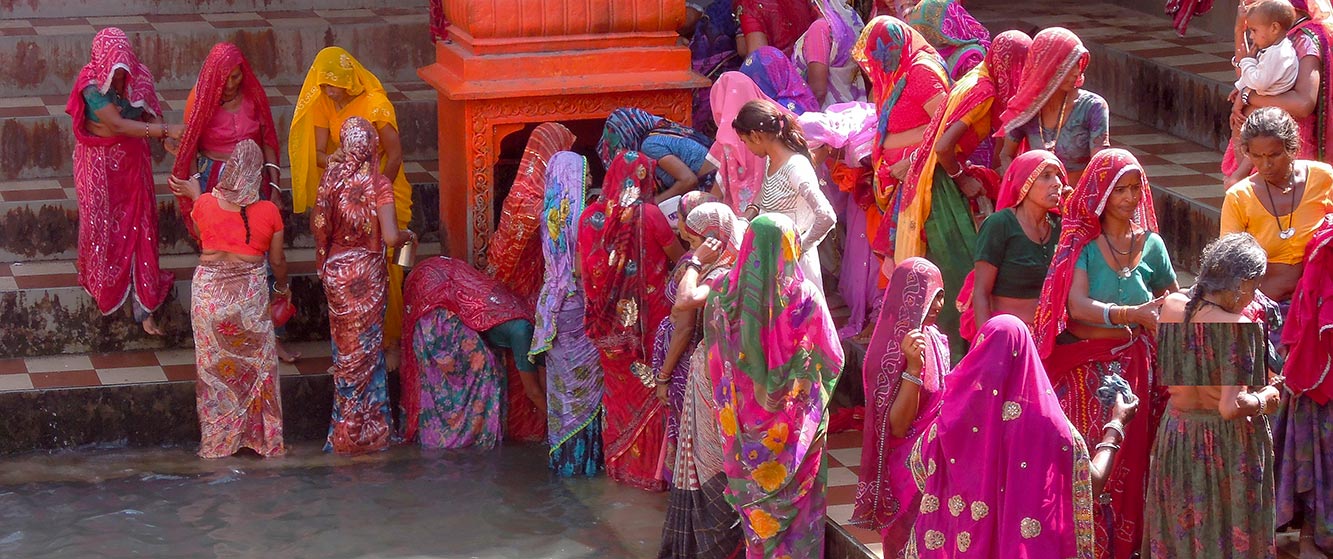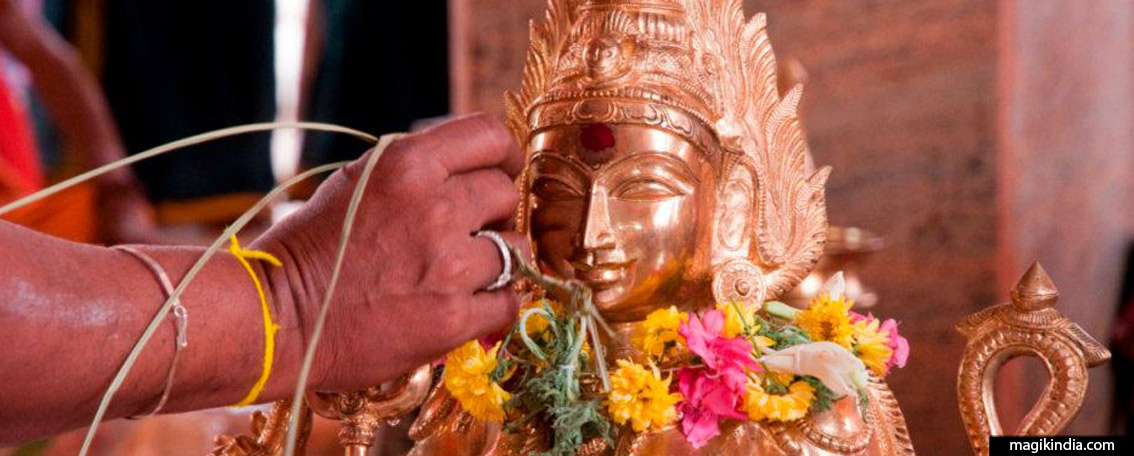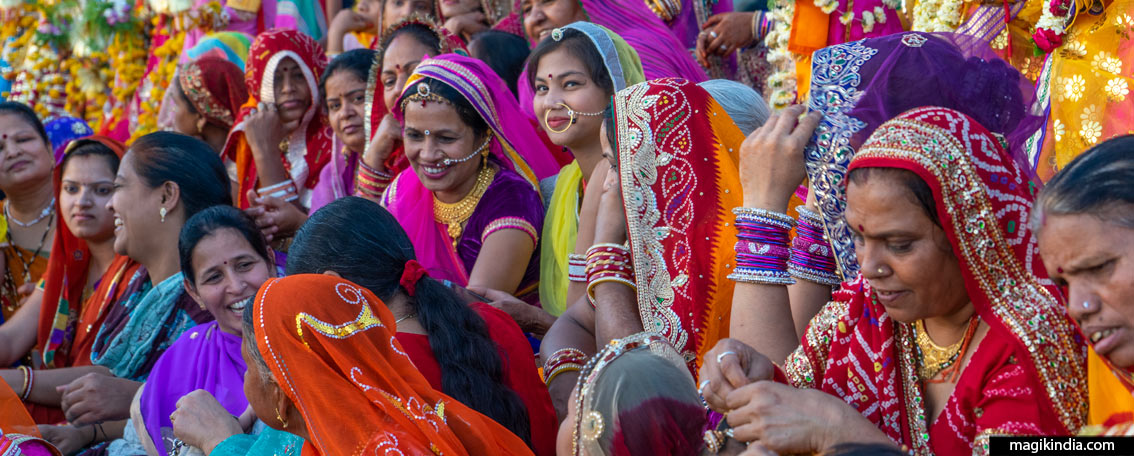
Athangudi, palace and tiles makers
Athangudi is a major heritage site in the Chettinad region of Tamil Nadu. Its impressive palace, a symbol of successful cultural fusion, is undoubtedly one of the most remarkable in the region. Athangudi also rhymes with “tile makers”: it is here that the famous colourful Chettinad tiles are made, exported worldwide.
Sri Letchmi Vilas palace
Athangudi is a village located 15 km north of Karaikudi. Apart from some Hindu temples, the main attraction of this place is its palace, known as “Sri Letchmi Vilas”, or more commonly, Athangudi Palace.

Construction of the palace began in 1929, commissioned by Shri. N. AR. Nachiappa Chettiar, son of Shri. N. Arunachalam Chettiar, who was one of the many entrepreneurs from this region who prospered in finance and commerce in Burma, amassing a large fortune.
The residence, which covers one hectare, required the hard work of around a hundred workers, blacksmiths, carpenters and artists, mostly from the Tirunelveli and Nagercoil regions.
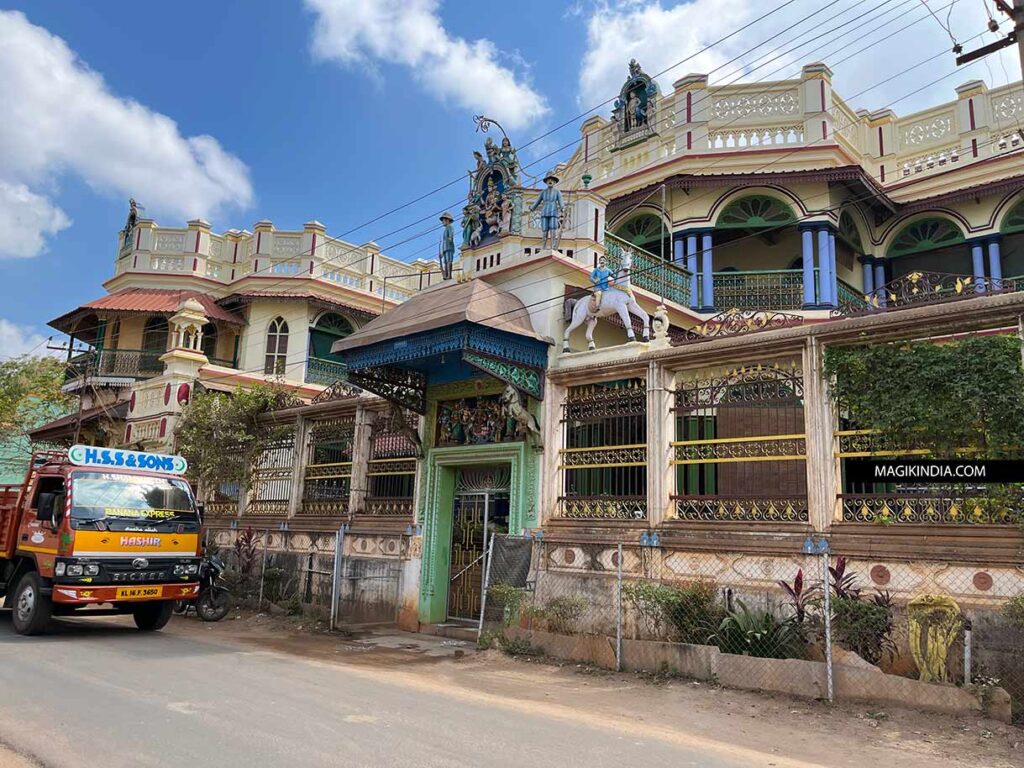
Completed in 1932, this mansion, which uses materials from all over the world, boasts of having been built without cement, without the help of engineers, architects, or electricity. It has no fewer than sixty rooms and more than 600 windows!
The building is named “Sri Letmi Vilas”, “Letchmi” being the name of the mother and daughter of Shri N. AR. Nachiappa Chettiar. For convenience, it is known as “Athangudi Palace”.
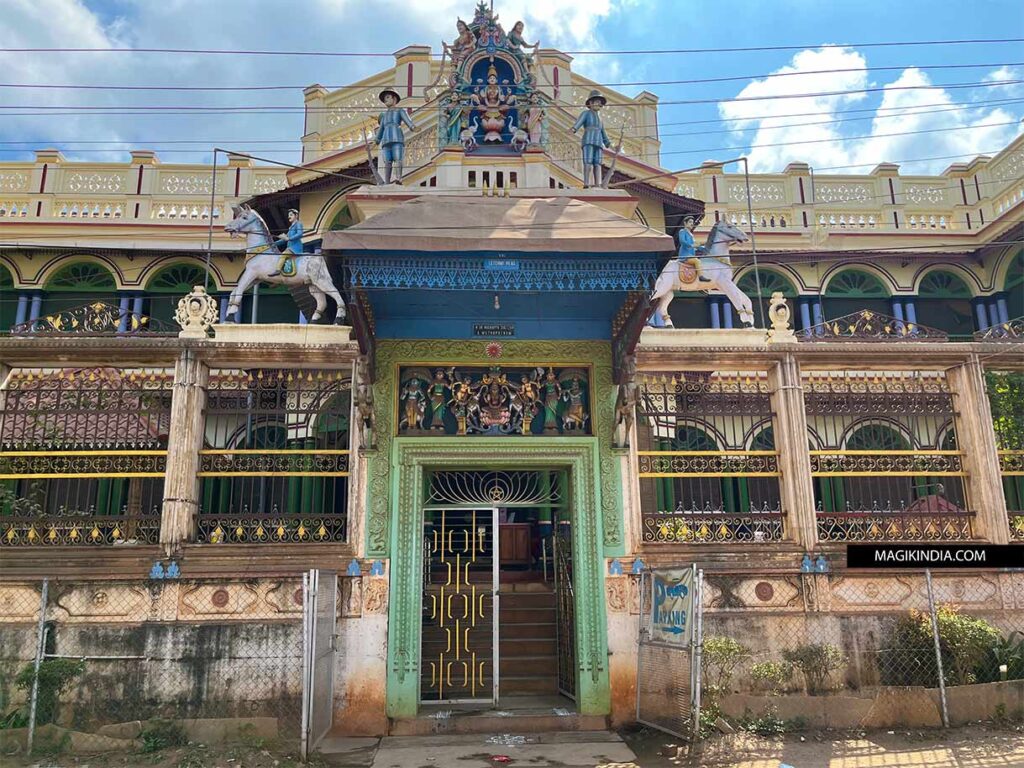
The palace’s entrance isn’t particularly remarkable. An ugly fence meant to protect the building and a tangle of electrical wires don’t enhance the palace’s appeal.
As with most Chettinad mansions, the entrance porch is protected by Gajalakshmi, the Hindu goddess of prosperity, accompanied by two white elephants. A few Western elements, horsemen and soldiers, also adorn the front of the palace.
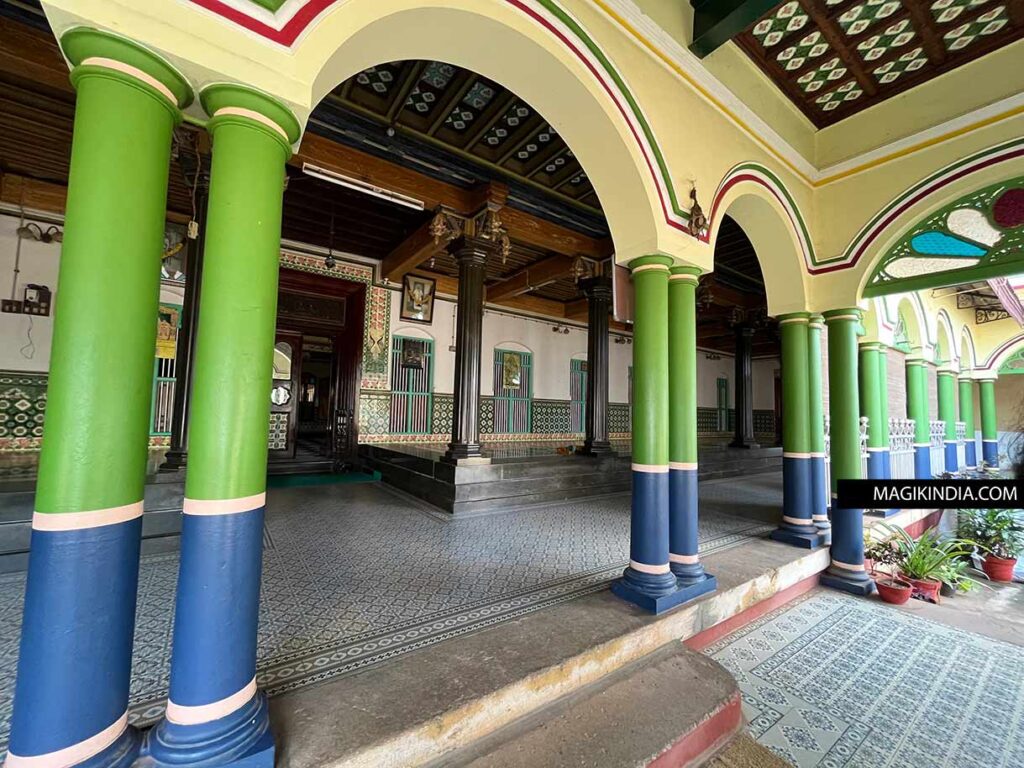
Past this porch, we enter the atmosphere of traditional Tamil homes with the “thinnai,” a raised veranda used for social functions. It is supported, not by wooden pillars as is usually the case, but by a row of black sandstone pillars. Black and white Italian marble tiles and blue tiles from Spain decorate the floors.
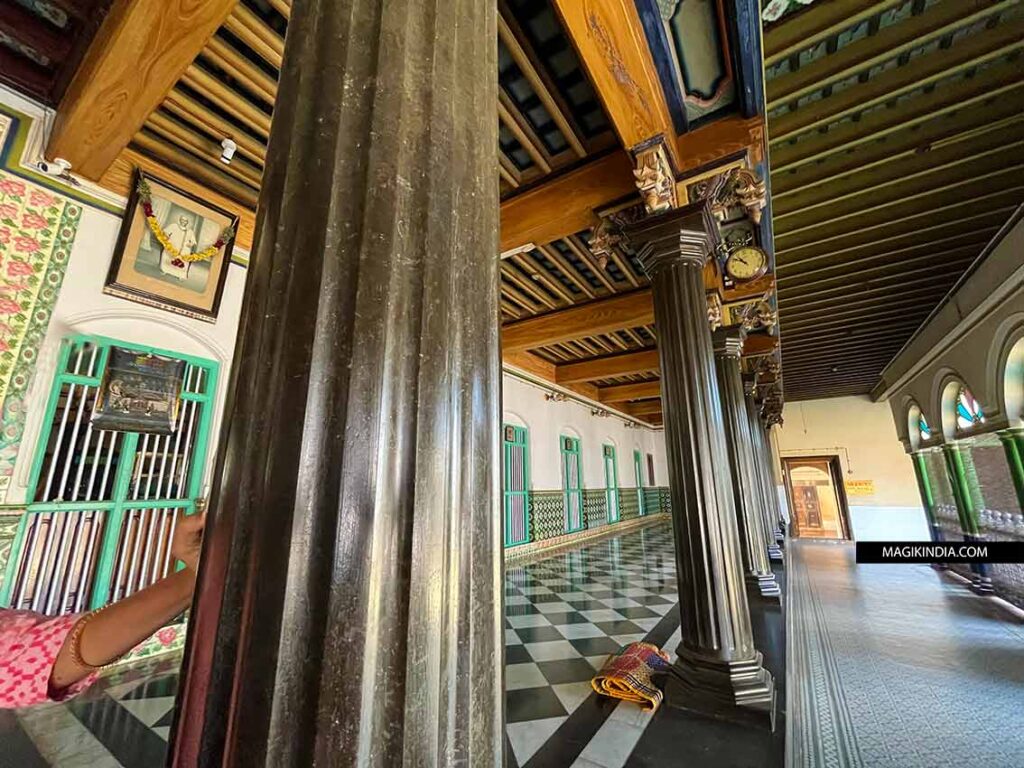
A massive door made of Burmese teak, bearing on each side the two portraits of the founders of the place (Shrimathi Meyyammai Achi and Shri N. AR. Nachiappa Chettiar) opens onto the Durbar hall, the grandiose reception room.
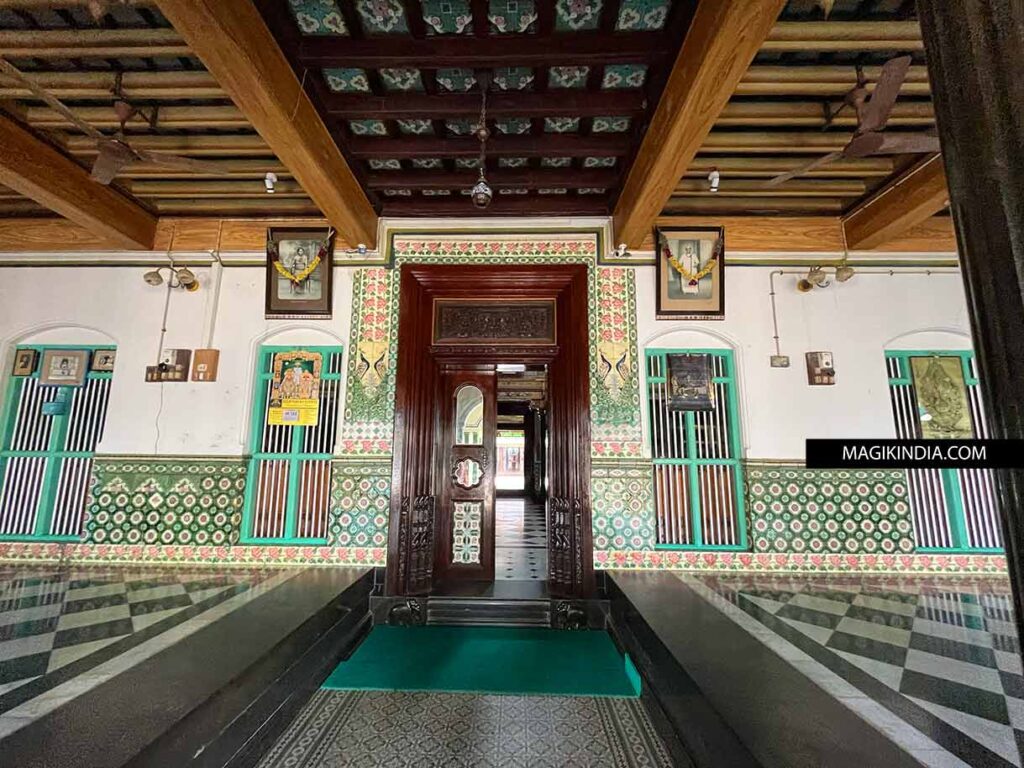
And there, it’s exhilaration, the beauty of the place leaves you speechless. It is without a doubt one of the most beautiful places in all of Chettinad.
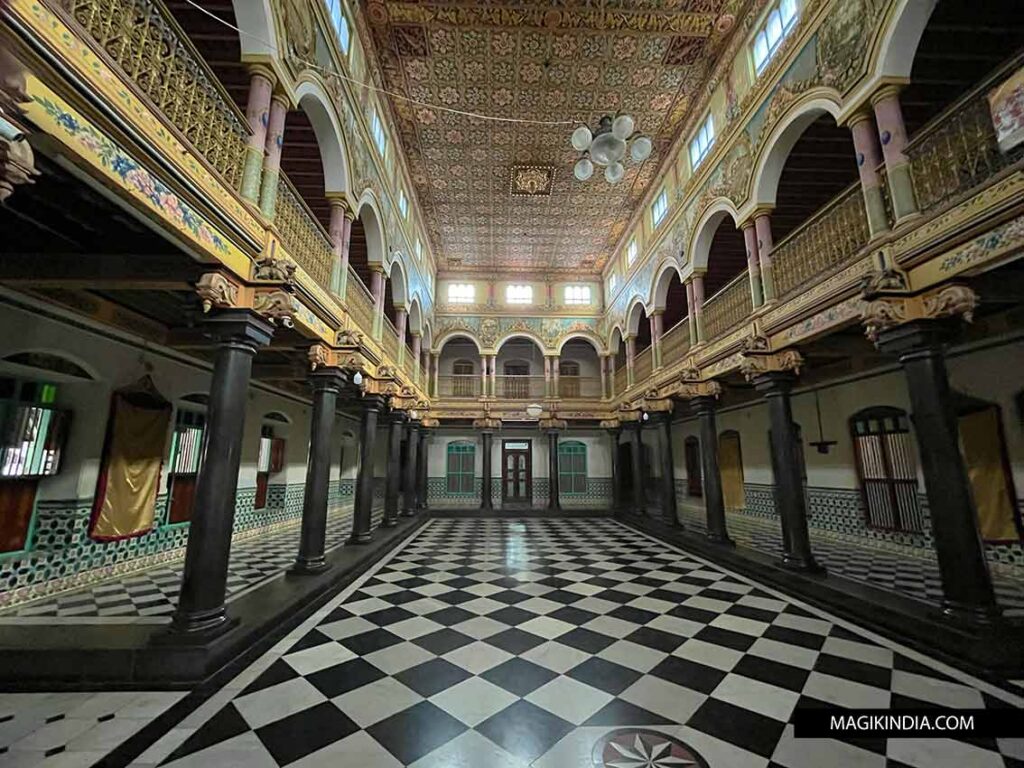
The European influence of this Durbar Hall is evident. From certain angles, it almost feels like a small palace in Florence, Italy.
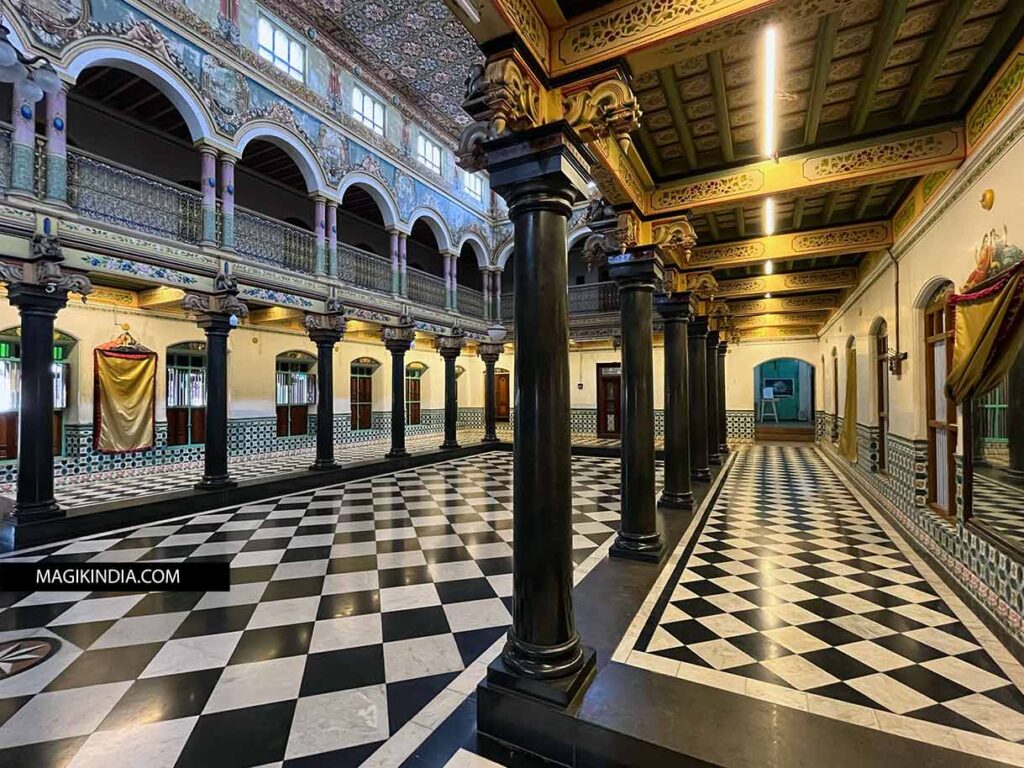
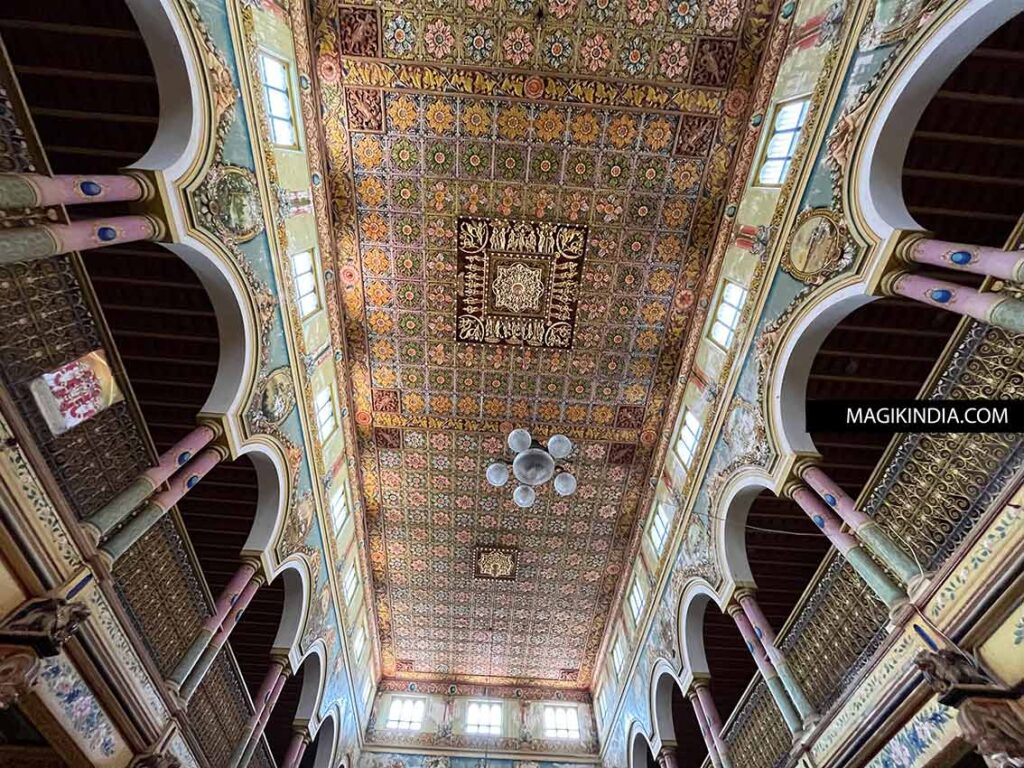
Colorful flowers carved into the wood cover the entire ceiling. Friezes featuring cherubs and various floral motifs are painted with natural pigments in pastel shades. The floor also features black and white Italian marble tiles, creating a very classy and solemn effect.
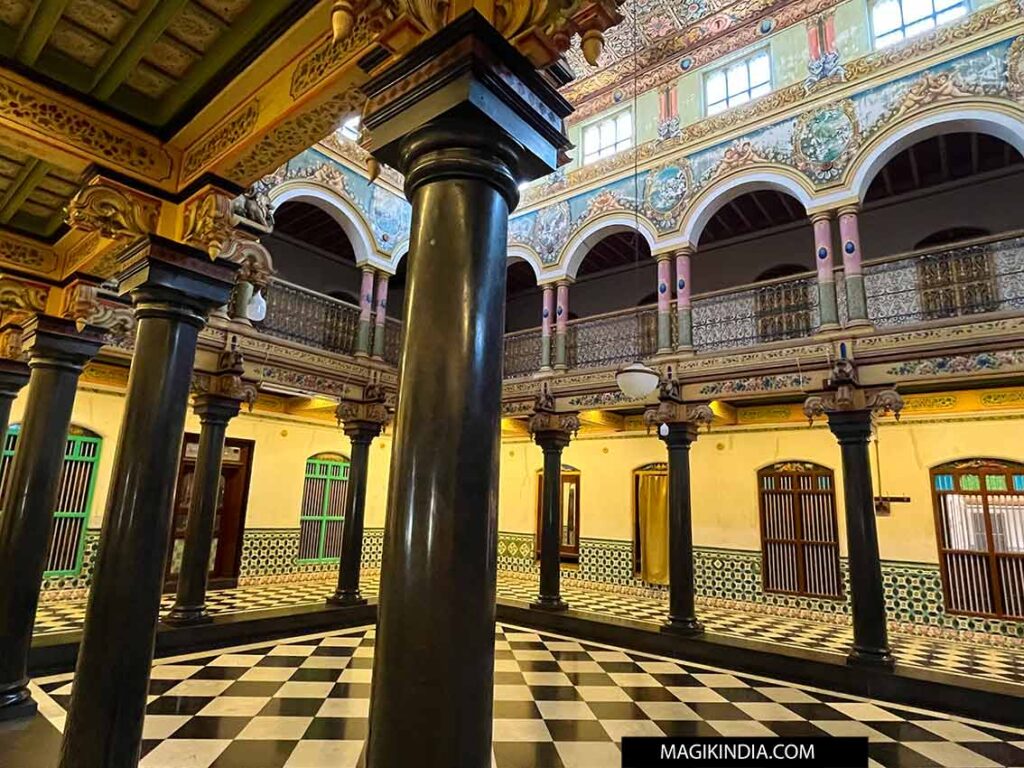
Each wall of the hall contains large mirrors from Belgium; they are surmounted by two women lying back to back on a couch. Some are covered with a thick yellow velvet fabric.
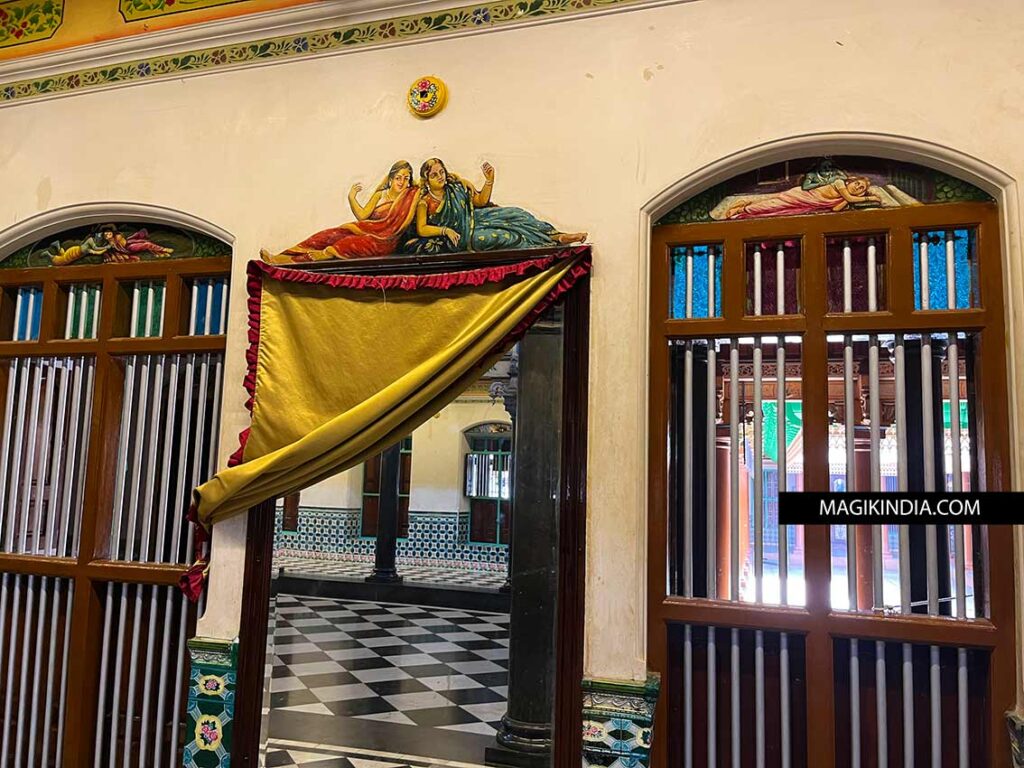
At the top of each window, paintings illustrate episodes from the Bhagavad Gita and the life of Lord Krishna.
Seeing my eyes widen at some of these scenes, the guide who accompanied me pointed out that the artists had taken some liberties with the illustration of Krishna’s life. Indeed, we can see the blue-faced lord in some rather sensual poses, including languidly lounging with naked women!
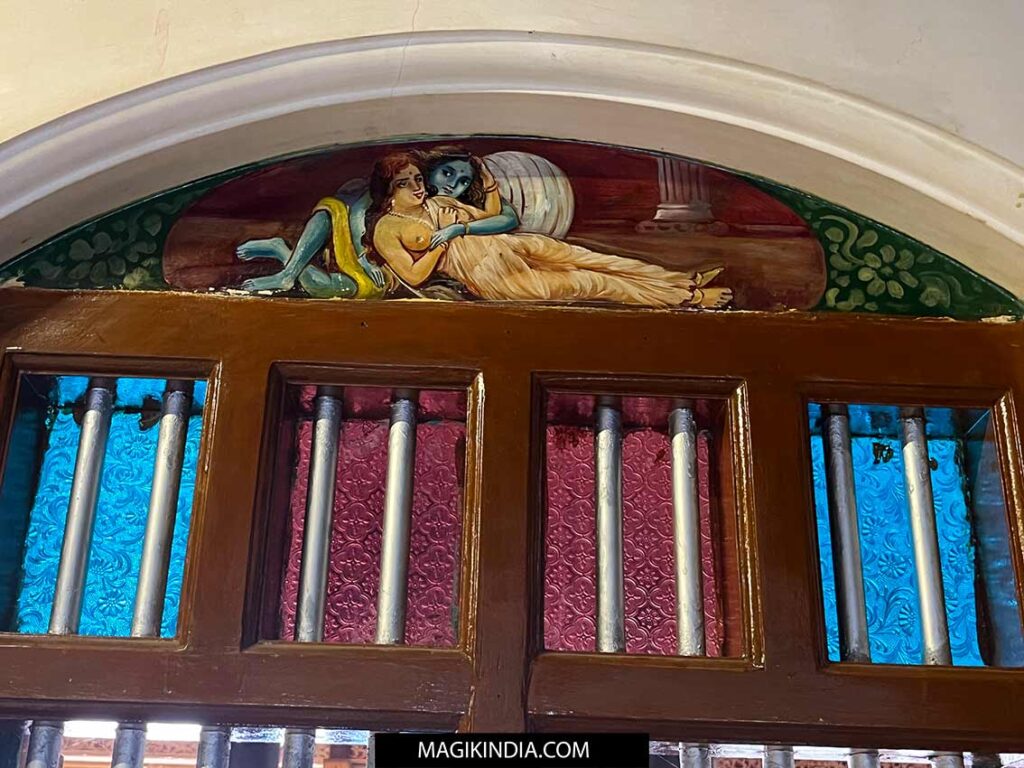
The ceramics on the lower walls, used for decoration and protection against humidity, come from Japan, once again testifying to the great artistic melting pot of the house.
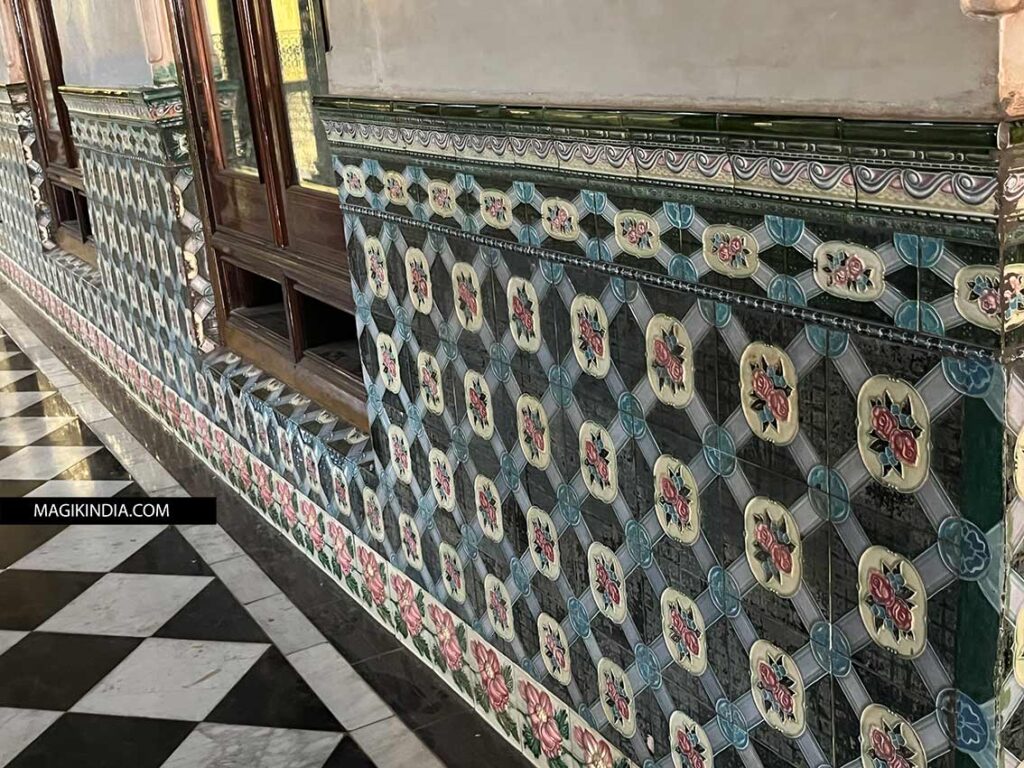
We then enter the main courtyard, the valavu, an open room typical of Tamil architecture that serves to ventilate the home and collect rainwater via an impluvium in the center of the courtyard. Rooms are distributed all around.

The final part of the tour is more understated, but no less charming. It’s a 15-meter-long dining room with walls coated with a mixture of lime, eggshell, shell powder, and coconut oil to insulate the space; it’s the same design found in the havelis of Rajasthan.
High windows with colored glass bring a kaleidoscopic effect to this white room.
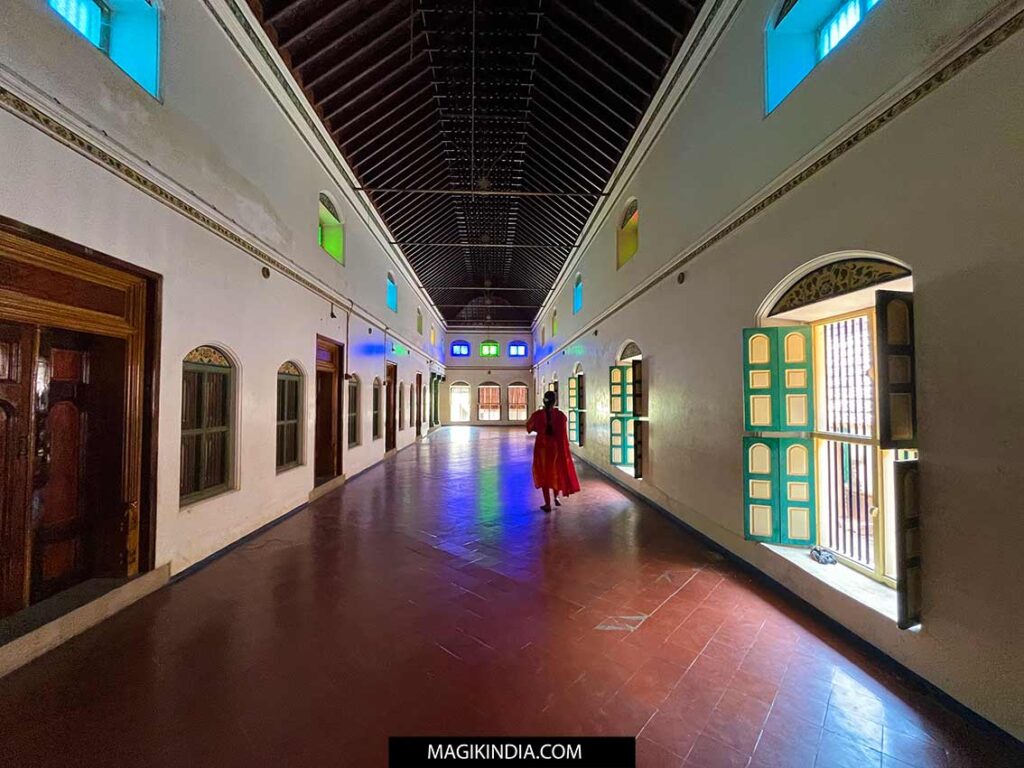
The tour ends with a little anecdote: in the Burmese-style framework, you can see long hooks. They were used to hang saris to make cradles for the family’s newborns.
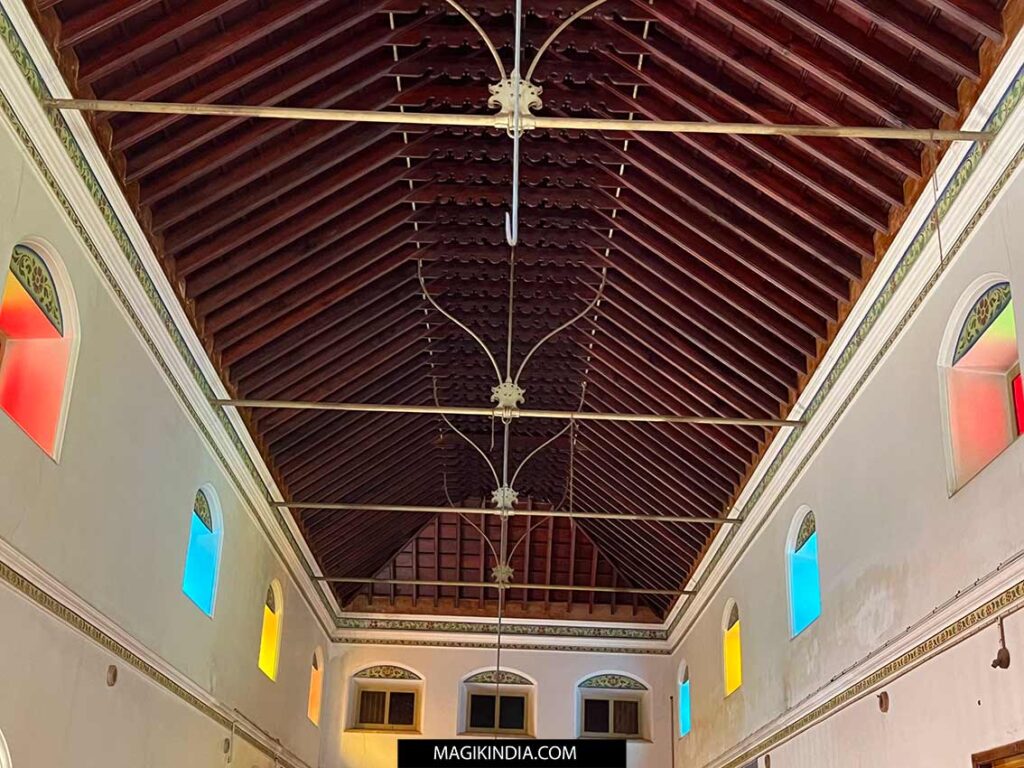
The tile makers of Athangudi
Another attraction of the town is the manufacture of the famous Chettinad tiles. Another beautiful expression of the region’s heritage, as these tiles have been used in the region for over 100 years.
I won’t dwell on this topic too much, as it will be the subject of an article of its own.

Athangudi cement tiles are handmade and are generally used to decorate the interiors of homes. They have a distinctive geometric design and the standard colors used are red, mustard, green, and gray… To be continued in a future issue… 😉
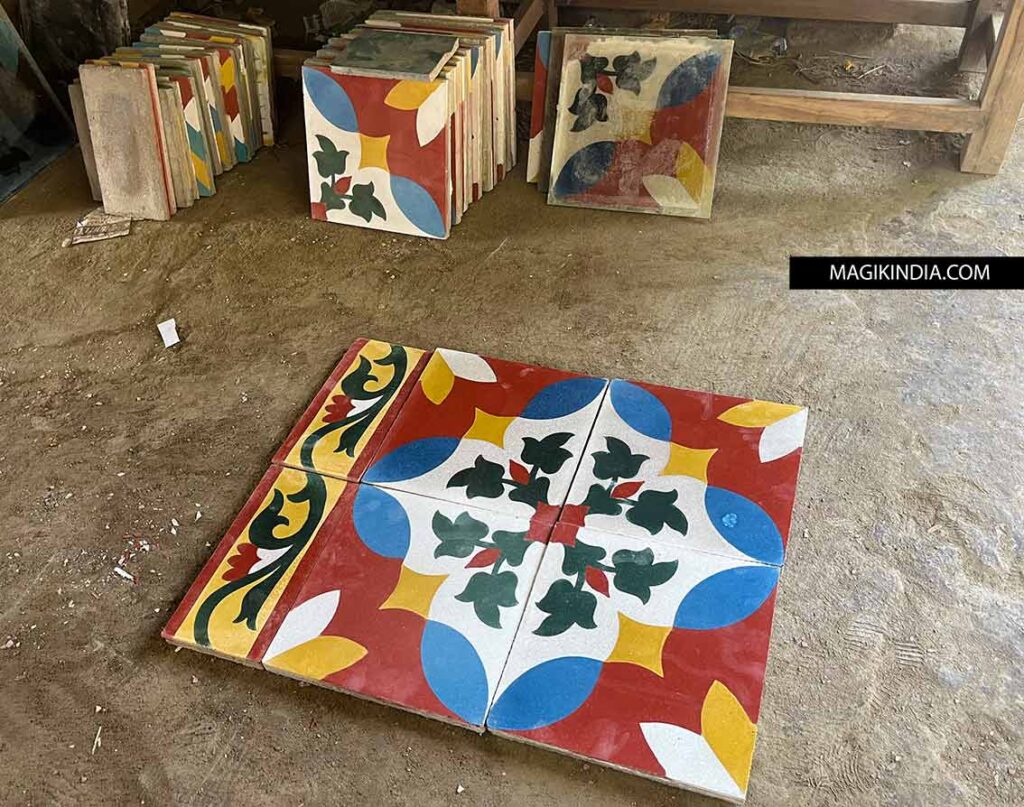
How to get to Chettinad?
Chettinad is 1.5 hours from Trichy, Tanjavur, and Madurai. Buses and trains stop here, but hiring a car and driver will allow you to travel the entire region with ease.
Where to stay?
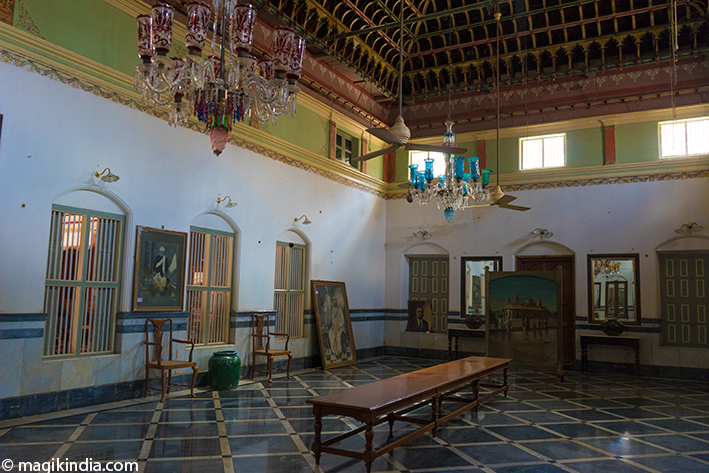
There are a good number of so-called “heritage” hotels, more or less well-maintained. I’ve chosen three charming hotels, in order of preference: “Saratha Vilas” (tastefully renovated by two French architects), “The Bangala” (renowned for its chef), and “The Lotus Hotel” (the newest, very colorful, opening in November 2024).
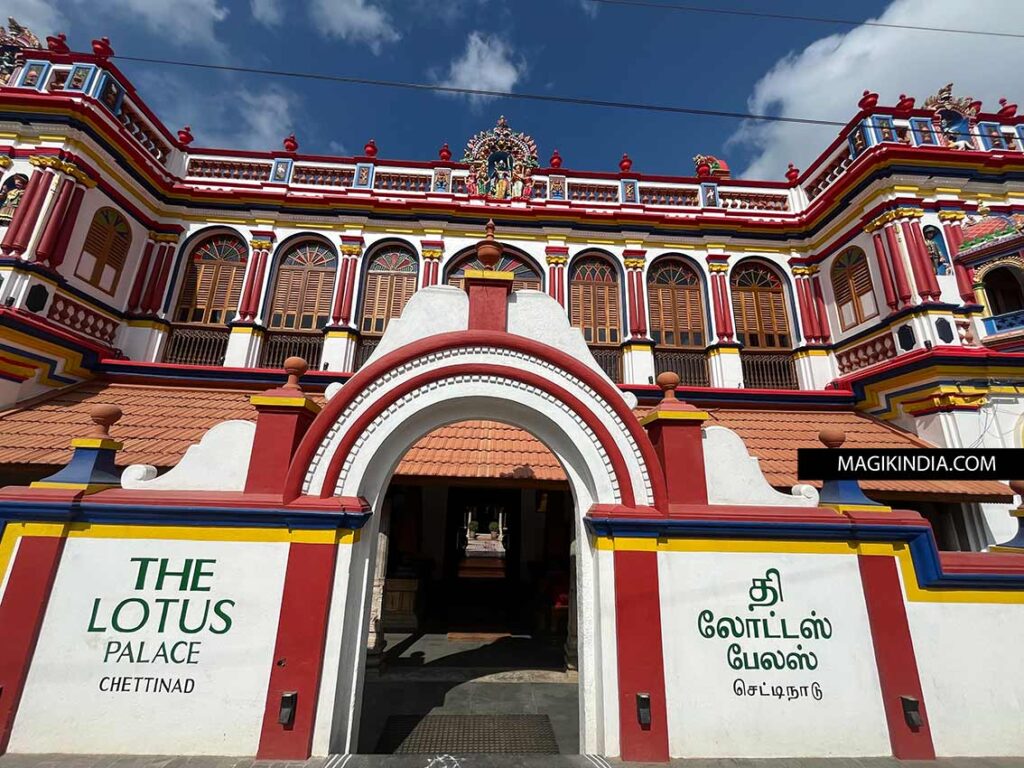
Where to eat?
Chettinad is renowned for its subtle cuisine. I especially recommend the restaurant at The Bangala Hotel and the one opposite the Lotus Hotel, The Vaadhyar’s House, in the village of Kanadukathan.



